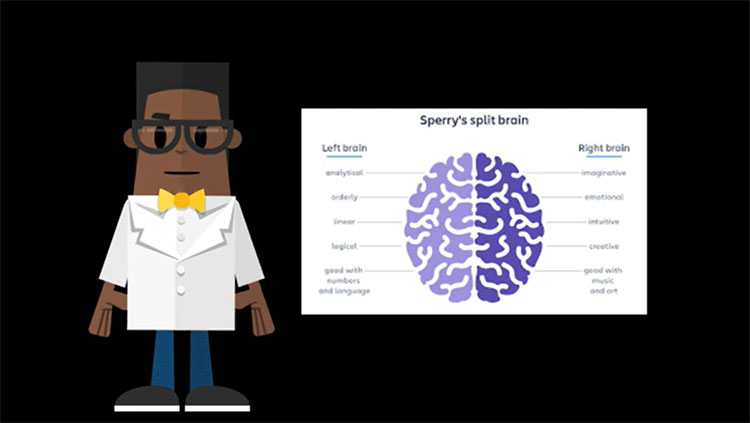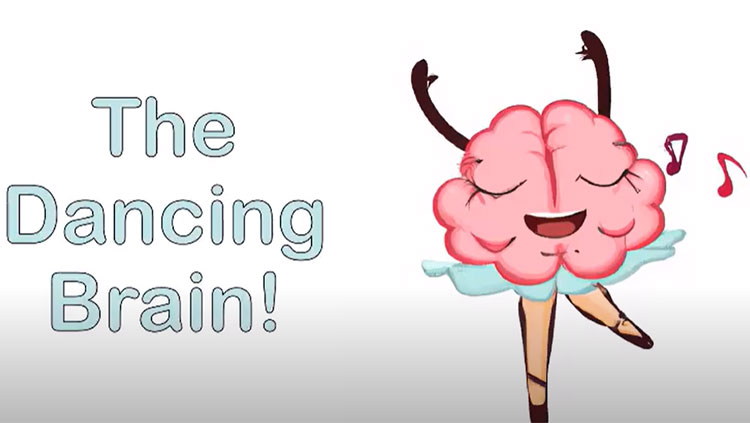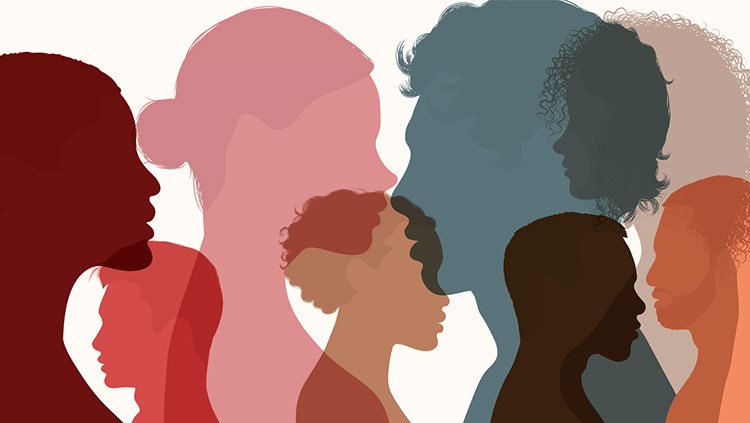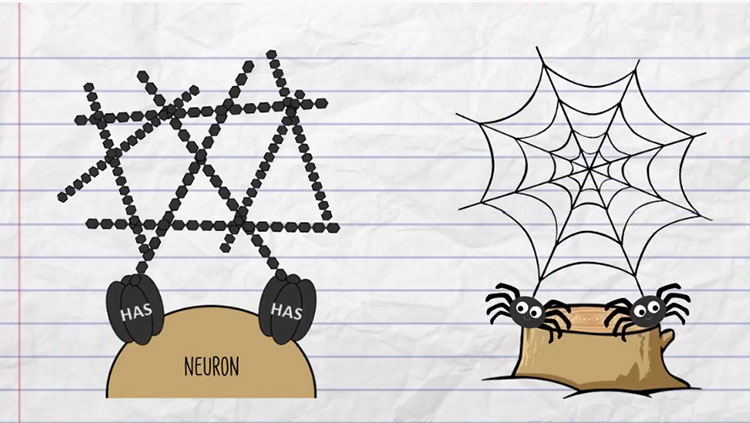Bruce Jenner and Changing Your Brain’s Sex
- Published20 Jun 2015
- Author Douglas Fields
- Source BrainFacts/SfN
The debut of Bruce Jenner’s sex change on the cover of Vanity Fair was stunning, but superficial. A deeper question than her newfound beauty is: What about her brain?
Just like the anatomy of nearly every other part of the human body, the brains of guys and gals are slightly different. The biggest differences are in the part of the brain controlling automated behaviors and urges--hunger, thirst, sexual behavior and reproductive physiology--the hypothalamus. In fact, one part of the hypothalamus, the preoptic nucleus which is important in sexual reproduction, is twice as big in males as in females. But receptors for sex hormones are found on neurons and glia throughout the adult human brain. It is fascinating to wonder why. But the fact is that cells throughout the brain are acutely keyed into the amount of male and female sex hormones circulating in the body. From this alone it should not be too surprising to learn that sex differences in the brain are hardly limited to the hypothalamus. His and her differences can be found throughout the brain.
Parts of the limbic system, which is involved in arousal and other emotional responses; the basal ganglia, which is part of the brain’s reward system giving us that elated sensation of satisfaction; portions of the prefrontal cerebral cortex, notably the insula, as well as many other brain regions are slightly enlarged in one sex and diminished in the other. Overall, men’s brains have slightly more white matter than women’s, and men’s brains are bigger. So, what happens when a person undergoes a sex change procedure to correct an accident of birth in which a person’s mind is mismatched to the sex of their body? A study performed in the Netherlands by Hilleke Hulshoff Pol and colleagues used MRI brain imaging to compare the anatomy of the brains of transsexual men and women before and after treatment to reassign their sex. In all, eight men changing their bodies into female, as in Bruce Jenner’s transformation into Caitlyn, and six transgender females becoming male were studied. In addition to surgery, male-to-female transsexuals are treated with “female sex hormones” (estrogens) and blockers of “male sex hormones” (anti-androgens) to suppress the production and physiological effects of androgens. In fact, estrogen and testosterone are normally present in both males and females, but the amount of each hormone differs by sex. Female-to-male transsexuals undergoing sex reassignment are treated with testosterone.
The study found that after only four months of hormonal therapy there were widespread changes in the brains of transsexuals that align the brain’s anatomy with their body’s new sex. The hypothalamus increased in size in transsexual women undergoing reassignment to men, and it shrank in transsexual men undergoing reassignment to women. Most striking was a dramatic decrease in total brain volume in male-to-female subjects. The opposite effect was seen in female-to-male subjects. The change in brain volume was not subtle. Total brain volume decreased by 31 ml (about the size of a shot glass) in male-to-female subjects after only four months of treatment. On the basis of this research one would expect that Jenner’s body would have lost not only muscle, but also lost brain tissue to adapt her body appropriately to the innate differences between sexes in their body and brain. Appearances can be misleading. Are the anatomical changes taking place in the brains of transsexuals accompanied by functional differences? Another study used functional magnetic resonance imaging (fMRI) to investigate brain activity that was provoked by sexual arousal. In this study, male-to-female transsexuals were shown erotic nude pictures of either male or female bodies after their sex reassignment surgery.
Sexual arousal stimulates activity throughout the brain, and the neural circuits that are involved are well documented. As one would expect, these include parts of the limbic system, hypothalamus, and prefrontal cortex. Electrical stimulation of the anterior cingulate gyrus in animal studies, for example, provokes autonomic and endocrine responses, including erection of the penis and secretion of hormones from the gonads. The study on transsexuals found that seeing nude pictures of men activated wide-spread areas of the brain of male-to-female transsexuals. Pictures of nude men caused a surge in brain activity that swept through the cerebellum, hippocampus, the amygdala and other parts of the limbic system, the brain’s reward center (caudate nucleus), and the insula. These changes in brain activity reflect brain function that is associated with sexual arousal being provoked by viewing the male nude body. All of these brain areas cooperate in the powerful sensation of sexual arousal, which involves many components, including cognitive, emotional, motivational, and autonomic physiological processes. On the other hand, viewing female nudes activated predominantly the hypothalamus and septal areas.
The hypothalamus is the most powerful control center of sexual behavior in animals, and the strong activation of the hypothalamus and septal area in male-to-female transsexuals viewing female nudes is perplexing. Other studies show that neither heterosexual individuals viewing videos of the same sex nor homosexual individuals viewing images of the opposite sex show activation of the hypothalamus. Although the reasons are unclear, activation of these areas triggering sexual responses in male-to-female transsexuals when viewing female nude pictures, which is opposite to the sexual orientation of these individuals, suggests that it is overly simplistic to regard transsexuals as homosexuals or heterosexuals who self-identify with the opposite sex. Will these anatomical and functional changes in the brain of transsexuals also change behavior? In animal studies, it is well established that hormonal treatment alters both the brain and behavior.
For example, treating adult female canaries with testosterone triggers changes in brain areas that control singing and this in turn changes the female signing behavior into that of a male canary. In studies of male-to-female transsexuals receiving estrogen treatment and testosterone suppression for three months, there is a measurable decline in anger, aggression, sexual arousal, sexual desire, spatial ability (usually males outperform females), and an increase in verbal fluency (usually females outperform males). The opposite behavioral and cognitive responses were found in female-to-male transsexuals. Being born into the body of the wrong gender from your mind’s point of view is one of many accidents of birth that modern science can now help to alleviate. As the cover of Vanity Fair shows, the effects of hormonal treatment on the former Olympic gold medalist’s body were profound, but the treatment must also have changed Jenner’s brain. And so it must be. Otherwise, sex reassignment treatment would be a superficial failure.
CONTENT PROVIDED BY
BrainFacts/SfN
References
Pol, H.E.H., et al., (2006) Changing your sex changes your brain: influences of testosterone and estrogen on adult human brain structure. Europ. J. Endocrinology155:S107-114.
Oh, S.-K., et al., (2012) Brain activation in response to visually evoked sexual arousal in male-to-female transsexuals: 3.0 Tesla functional magnetic resonance imaging. Korean J. Radiology 13:257-264.
Photo credit: "VanityFairJuly2015" by Source (WP:NFCC#4).
Licensed under Fair use via Wikipedia - https://en.wikipedia.org/wiki/File:VanityFairJuly2015.jpg#/media/File:VanityFairJuly2015.jpg


















